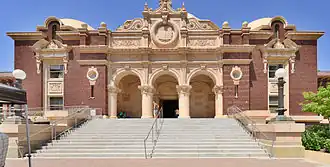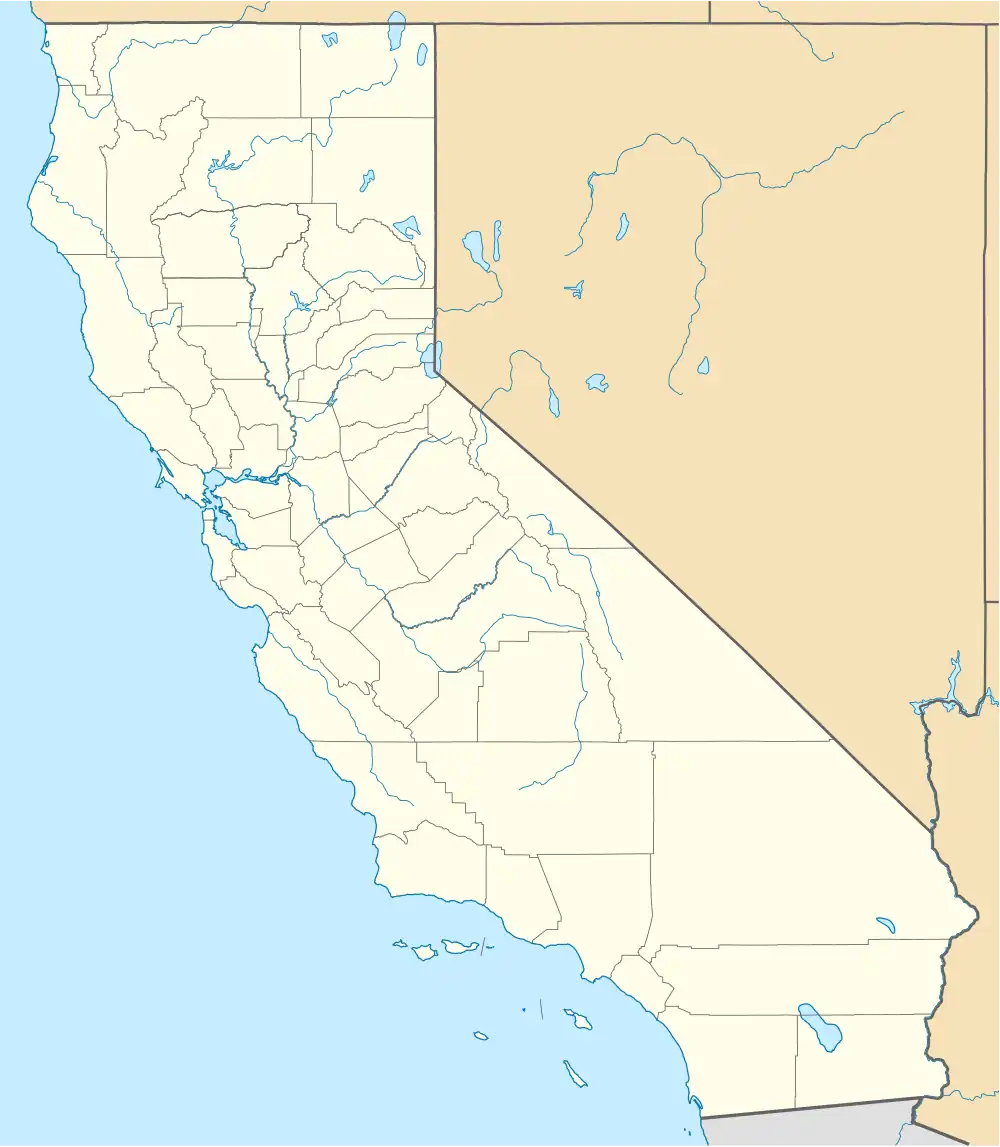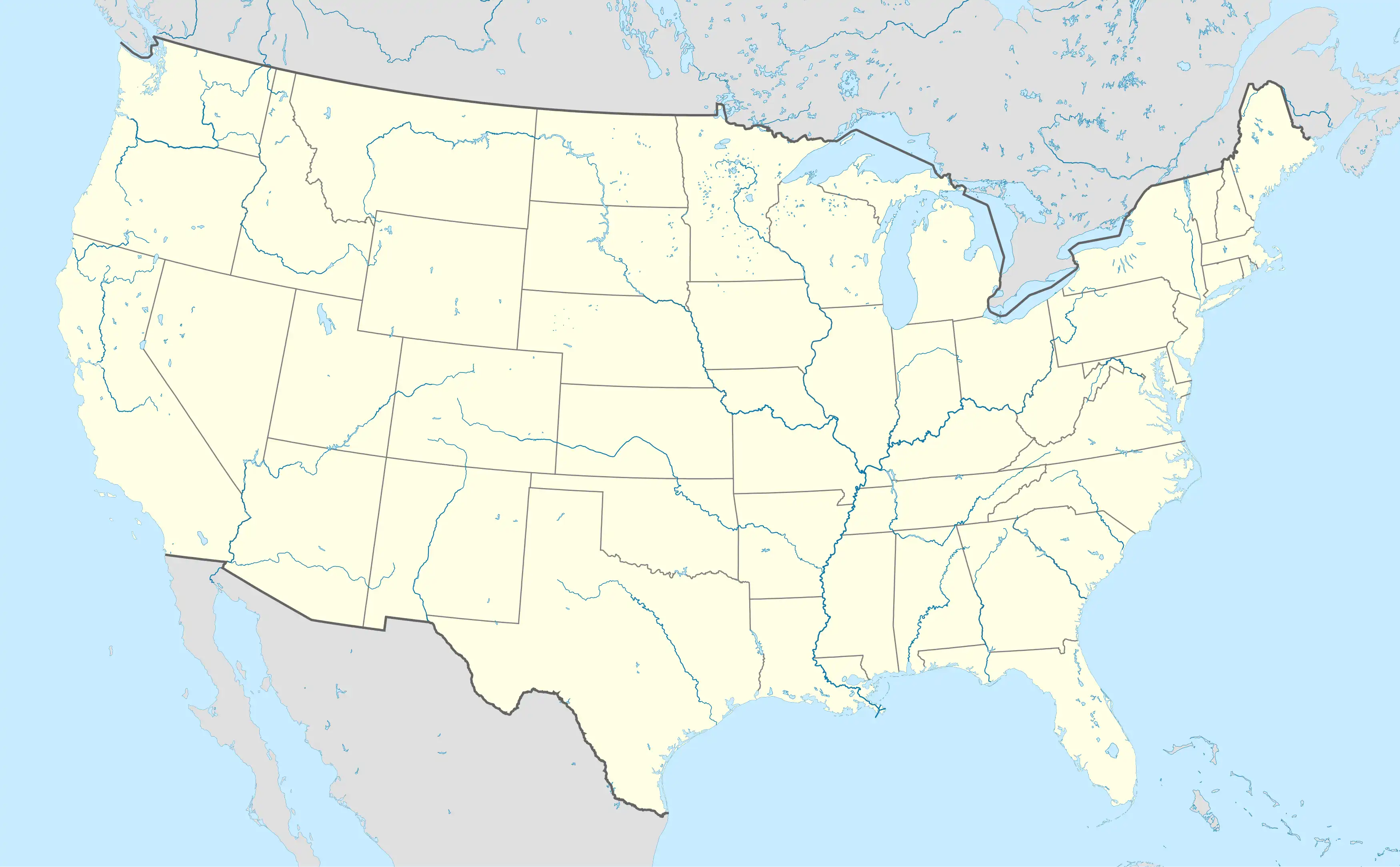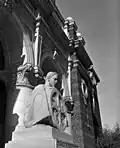Natural History Museum of Los Angeles County
 | |
 The east entrance and façade | |
| Established | 1913 |
|---|---|
| Location | Exposition Park Los Angeles, California |
| Coordinates | 34°1′1″N 118°17′16″W / 34.01694°N 118.28778°W |
| Type | Natural history museum |
| Visitors | about 1 million annually |
| Director | Lori Bettison-Varga[1] |
| Public transit access | |
| Website | nhm |
Natural History Museum | |
   | |
| Location | 900 Exposition Blvd Los Angeles, California |
| Area | 6 acres (2.4 ha) |
| Built | 1913 |
| Architect | Hudson & Munsell |
| Architectural style | |
| NRHP reference No. | 75000434[2] |
| Added to NRHP | March 4, 1975 |
The Natural History Museum of Los Angeles County is the largest natural and historical museum in the Western United States.[3] The museum is located in Exposition Park, Los Angeles, next to the California Science Center. Its collections include nearly 35 million specimens and artifacts and cover 4.5 billion years of history. This large collection comprises not only of specimens for exhibition, but also vast research collections housed on and offsite.
The museum has another site in Greater Los Angeles: the La Brea Tar Pits in Hancock Park. These museums work together to achieve their common mission: "to inspire wonder, discovery, and responsibility for our natural and cultural worlds."[4]
History

NHM opened in Exposition Park, Los Angeles, California, in 1913 as The Museum of History, Science, and Art. The moving force behind it was a museum association founded in 1910. Its distinctive main building with fitted marble walls and domed and colonnaded rotunda, is on The National Register of Historic Places. Additional wings opened in 1925, 1930, 1960, and 1976.
The museum split in 1961 into The Los Angeles County Museum of History and Science and the Los Angeles County Museum of Art (LACMA). LACMA moved to new quarters on Wilshire Boulevard in 1965, and the Museum of History and Science was renamed The Los Angeles County Museum of Natural History. Eventually, the museum renamed itself again, becoming The Natural History Museum of Los Angeles County.
In 1977, the Page Museum at La Brea Tar Pits opened in Hancock Park east of LACMA.
From 1989-2025 NHM operated the William S. Hart Ranch and Museum in Newhall. In July 2025, ownership and operations were taken over by the City of Santa Clarita.[7]
In 2003, the museum began a campaign to transform its exhibits and visitor experience. The museum reopened its seismically retrofitted renovated 1913 rotunda, along with the new "Age of Mammals" exhibition[8] in 2010. Its Dinosaur Hall opened in July 2011. A new Los Angeles history exhibition, "Becoming Los Angeles", opened in 2013. The outdoor Nature Gardens and Nature Lab, which explore L.A. wildlife, also opened in 2013.
In November 2024, the museum opened a new wing and community hub the NHM Commons designed by Frederick Fisher and Partners.[9] Located on the southwest corner of the museum, opening into Exposition Park, the outside-inside experience features 75,000-square feet of new and refreshed spaces, including many free experiences.: Gnatalie, a more than 75-foot-long green-boned sauropod, L.A. artist Barbara Carrasco’s landmark mural, L.A. History: A Mexican Perspective, and an exhibition of notable specimens found by local community scientists and collected and researched by museum scientists. The community space includes indoor and outdoor experiences including a welcome area, a lobby with a shop, a theater, a café, and a plaza.[10][11]
NHM is undertaking a major project to renovate the park and museum at La Brea Tar Pits called Reimagining La Brea Tar Pits.[12][13] Designed by architectural firm Weiss/Manfredi, the renovation aims to preserve historic elements of the museum while expanding exhibition and research space.[14][15]
Directors
- Dr. Lori Bettison-Varga was named President and Director in 2015.[16]
- Jane Pisano served as President and Director from 2001 to 2015.[17]
- James L. Powell, 1994-2001
- Craig Call Black, 1982-1994
- Giles W. Mead, 1970-1978
Research and collections
The museum maintains research and collections in the following fields:
- Annelida
- Anthropology and Archaeology
- Crustacea
- Echinoderms
- Entomology
- Ethnology
- Herpetology
- History
- Ichthyology
- Invertebrate paleontology
- Malacology
- Mammalogy
- Mineralogy
- Ornithology
- Vertebrate paleontology
The museum has three floors of permanent exhibits. Among the most popular museum displays are those devoted to animal habitats, dinosaurs, pre-Columbian cultures, The museum's diorama halls, built in 1925, are widely recognized for their picturesque scenes and well-maintained taxidermy.[18] [19] The Nature Lab explores urban wildlife in Southern California and the Nature Gardens transformed hardscape into an interactive teaching garden.[20][21]
The museum's collections are strong in many fields, but the mineralogy and Pleistocene paleontology are the most esteemed, the latter thanks to the wealth of specimens collected from the La Brea Tar Pits.
The museum has almost 30 million specimens representing marine zoology. These include one of the largest collections of marine mammal remains in the world, housed in a warehouse off site, which at over 5,000 specimens is second in size only to that of The Smithsonian.[22]
The museum's collection of historical documents is held in The Seaver Center for Western History Research.[23]
Special exhibits
The museum hosts regular special exhibitions which augment its collections and advance its mission. Recent special exhibits have included Mummies and Pterosaurs, both in 2016. The museum has also recently hosted exhibits that incorporate pop culture, such as an exhibit promoting House of the Dragon in 2022.[24] There have also been Los Angeles themed special exhibits such as a Becoming Los Angeles that showcases Los Angeles history through the years, divided up into before 1929 and after 1929.[25] Another example would be the current exhibit titled L.A. Underwater which exhibits almost 40 fossils from the prehistoric time, when the land where L.A. now is, was underwater.[26]
The museum also hosts a butterfly pavilion outside every spring and summer and a spider pavilion on the same site in the fall.[27][28]
Since 2017, the museum has hosted a special exhibit about P-22, the mountain lion that lived in nearby Griffith Park.[29][30][31]
Architecture
Over the years, the museum has built additions onto its original building. Originally dedicated when The Natural History Museum opened in 1913, the rotunda is one of the museum's most elegant and popular spaces. Lined with marble columns and crowned by a stained glass dome, the room is also the home of the very first piece of public art funded by Los Angeles County, a Beaux-Arts statue by Julia Bracken Wendt entitled Three Muses, or History, Science and Art.[32] This hall is among the most distinctive locales in Los Angeles and has often been used as a filming location.
Film and television
- In 1996, Sheryl Crow filmed her "If It Makes You Happy" music video in the museum's Endangered Species Hall.[33]
- Honda filmed its "Matthew Broderick's Day Off" commercial at the museum.[34]
- In 2025, Machine Gun Kelly filmed his music video for his song "vampire diaries" at the museum.
Gallery
-
 Old east door of The Natural History Museum in 1956
Old east door of The Natural History Museum in 1956 -
Hall of African Mammals
-
 Triceratops mount in the Natural History Museum of Los Angeles County
Triceratops mount in the Natural History Museum of Los Angeles County -
Museum rotunda
-
 Dinosaur statues along the road leading to the museum
Dinosaur statues along the road leading to the museum
References
- ^ Boehm, Mike (July 8, 2015). "Lori Bettison-Varga named new president of L.A. County's Natural History Museum". Los Angeles Times. Retrieved July 15, 2016.
- ^ "Natural History Museum". United States Department of the Interior – National Park Service. March 4, 1975.
- ^ "Libraries & Museums". County of Los Angeles. Archived from the original on June 29, 2016. Retrieved July 15, 2016.
- ^ "Mission". Natural History Museum of Los Angeles. Archived from the original on September 8, 2009.
- ^ Wakim, Marielle (May 15, 2018). "Fascinating Objects Tell the Story of L.A. in This Revamped Exhibit". Los Angeles. Retrieved March 16, 2022.
- ^ "Antonio de Coronel". Archived from the original on September 9, 2015. Retrieved December 12, 2020.
- ^ Release, News (July 14, 2025). "It's official: Hart Park becomes city's 40th park". Santa Clarita Valley Signal. Retrieved August 19, 2025.
{{cite web}}:|first=has generic name (help) - ^ Muchnic, Suzanne (July 4, 2010). "'Age of Mammals' at The Natural History Museum". Los Angeles Times.
- ^ "Opening New Doors to Natural History". Natural History Museum. Retrieved April 24, 2023.
- ^ Sharp, Steven (November 20, 2024). "Here's a look inside the L.A. County Natural History Museum's $75M expansion | Urbanize LA". la.urbanize.city. Retrieved August 19, 2025.
- ^ Nichols, Chris (January 28, 2025). "A New $75 million Expansion Opens the Natural History Museum Onto Exposition Park". LAmag - Culture, Food, Fashion, News & Los Angeles. Retrieved August 19, 2025.
- ^ "A Fossil Museum Uses the Past to Reimagine Climate's Future (Published 2022)". October 20, 2022. Retrieved August 19, 2025.
- ^ X; Instagram (January 26, 2023). "La Brea Tar Pits pushes forward with its indoor-outdoor makeover". Los Angeles Times. Retrieved August 19, 2025.
{{cite web}}:|last2=has generic name (help) - ^ Roe, Mike (August 27, 2019). "The La Brea Tar Pits Are Being Reimagined -- And You Can Vote On Their Future". LAist. Retrieved August 19, 2025.
- ^ Folven, Edwin (February 6, 2025). "Tar Pits project clears significant hurdle". Beverly Press & Park Labrea News. Retrieved August 19, 2025.
- ^ "Lori Bettison-Varga named new president of L.A. County's Natural History Museum". Los Angeles Times. July 8, 2015. Retrieved August 19, 2025.
- ^ "Q&A: Jane Pisano is leaving L.A.'s Natural History Museum far brighter than she found it". Los Angeles Times. October 2, 2015. Retrieved August 19, 2025.
- ^ "Do science dioramas still have a place in today's museums?". January 31, 2025. Retrieved August 19, 2025.
- ^ "PHOTOS: A look inside the taxidermy lab at The Natural History Museum". LAist. Retrieved August 19, 2025.
- ^ "Beyond Dioramas: Nature's New Story (Published 2013)". August 2, 2013. Retrieved August 19, 2025.
- ^ "Natural History Museum's Otis Booth Pavilion finally revealed". Los Angeles Times. June 9, 2013. Retrieved August 19, 2025.
- ^ Fessenden, Marissa (July 20, 2015). "In L.A. There's a Warehouse Filled with Whale Bones". Smithsonian.
- ^ "About the Seaver Center". Natural History Museum Los Angeles County. Retrieved December 31, 2016.
- ^ "House of the Dragon:The Targaryen Dynasty | Natural History Museum". nhm.org. August 5, 2022. Retrieved May 30, 2023.
- ^ "Becoming Los Angeles". Natural History Museum. Retrieved April 24, 2023.
- ^ "L.A. Underwater". Natural History Museum. Retrieved April 24, 2023.
- ^ "Butterfly Pavilion". Natural History Museum of Los Angeles County. Retrieved November 21, 2017.
- ^ "Spider Pavilion". Natural History Museum of Los Angeles County. Retrieved November 21, 2017.
- ^ "P-22: The story of L.A.'s most famous feline". Natural History Museum of Los Angeles County.
- ^ "'LA's most famous feline,' P-22, gets a special exhibit at the Natural History Museum". KPCC 89.3 FM. July 20, 2017. Retrieved October 27, 2022.
- ^ Elston, Christina (July 21, 2017). "P-22 Shows His Stuff at the Natural History Museum". L.A. Parent.
- ^ Rubenstein, Charlotte Streifer (1990). American Women Sculptors: A History of Women Working in Three Dimensions. Boston: G. K. Hall. p. 108. ISBN 978-0-8161-8732-4.
- ^ "#DioramaChallenge | Natural History Museum". nhm.org. Retrieved August 9, 2025.
- ^ "#DioramaChallenge | Natural History Museum". nhm.org. Retrieved August 9, 2025.